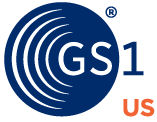Standardized Product Information Enables Shorter Product Development Cycles, Resulting in Process Efficiencies, Enhanced Sustainability and Transparency for Consumers
EWING, NJ - April 7, 2020 - GS1 US® has published the “Best Practice Guideline for Exchanging Raw Material Attributes,” created by apparel and general merchandise leaders to help industry utilize standards in their upstream supply chain practices. By leveraging GS1 Standards to efficiently share information about product components in an effort to speed up raw material sourcing decisions, industry can better support sustainability initiatives and enhance transparency for consumers. The guideline addresses retail industry challenges associated with the time-consuming process of mapping raw material data attributes from multiple sources.
Developed by members of the GS1 US Apparel and General Merchandise Initiative, the guideline offers a common vocabulary that defines attributes in four primary material types—knit fabric, woven fabric, leather and synthetic material. It also helps supply chain partners categorize like-kind materials using a common set of definitions which will contribute to streamlined sourcing decisions, clearer purchasing specifications and reduced time to market.
In addition to enabling transparency in product sourcing, these efficiencies can also support platforms that promote a circular economy and lead to enhanced sustainability in the retail supply chain. When items are identified consistently and that identification remains linked to the item, goods become reusable and repairable long after the time of first purchase, prolonging the life cycle and reducing waste.
“As more retail companies are focused on improving sustainability and transparency, the consistent identification of raw materials is an important step toward achieving those goals,” said Angela Fernandez, vice president of community engagement, GS1 US. “This industry guidance provides how to define, compare and communicate raw material data across retail operations, which can help partners share higher quality data while reducing product development cycle times.”
Initiative members will continue to evaluate additional raw material data definitions in future releases, as the needs of industry evolve. To download the guideline, please visit www.gs1us.org/rawmaterials. For more information about the GS1 US Apparel and General Merchandise Initiative, please visit https://www.gs1us.org/agminitiative.
About GS1 US
GS1 US®, a member of GS1 global, is a not-for-profit information standards organization that facilitates industry collaboration to help improve supply chain visibility and efficiency through the use of GS1 Standards, the most widely used supply chain standards system in the world. Nearly 300,000 businesses in 25 industries rely on GS1 US for trading partner collaboration that optimizes their supply chains, drives cost performance and revenue growth, while also enabling regulatory compliance. They achieve these benefits through solutions based on GS1 global unique numbering and identification systems, barcodes, Electronic Product Code (EPC®)-based RFID, data synchronization and electronic information exchange. GS1 US also manages the United Nations Standard Products and Services Code® (UNSPSC®). For more information, please visit www.gs1us.org.

